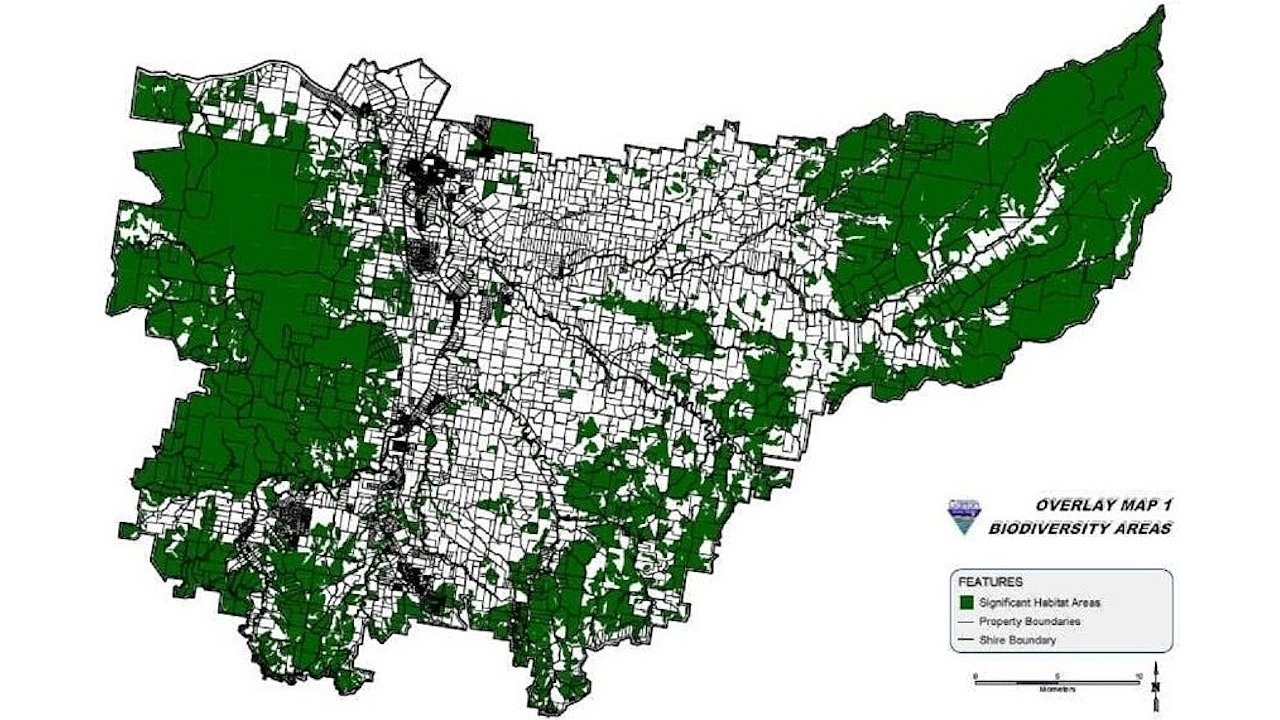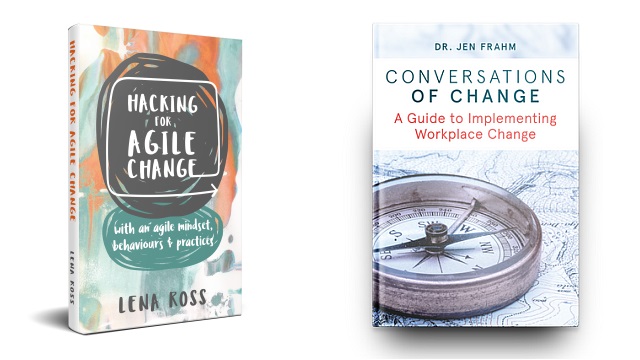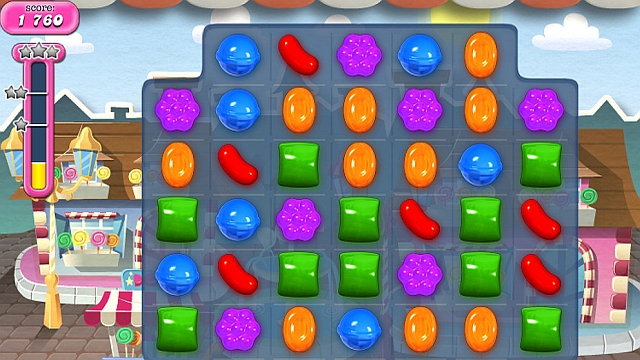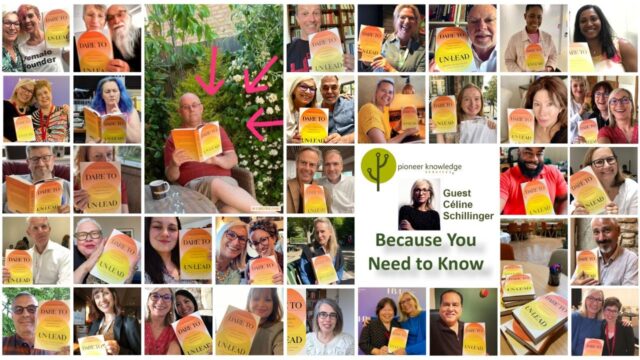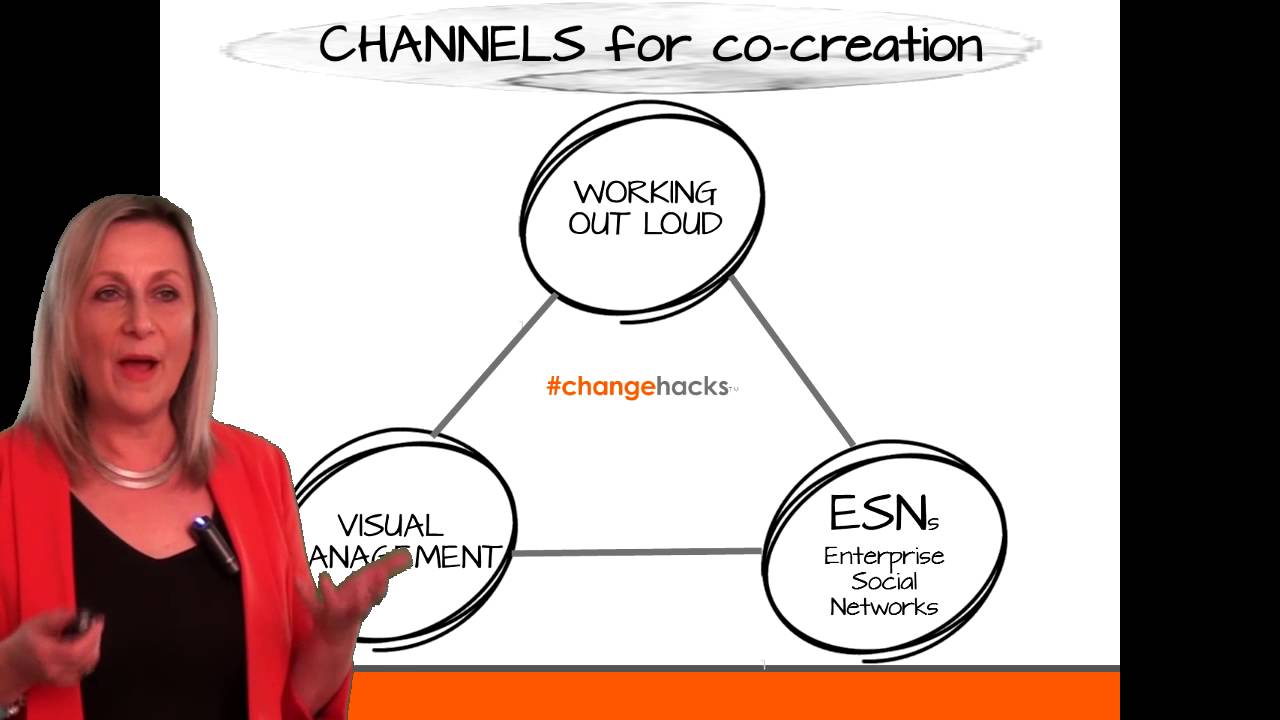
Change hack 5: Three channels for co-creation you need to know [Change hacks series]
This is part 5 of a series of articles on ‘change hacks’ from expert change management speaker and facilitator Lena Ross.
In our disruptive business environment, we know that fewer CEOs are sponsoring long-term, multi-year transformation programs. Disruptive times means that we need to explore new approaches to achieve cut-through. Along with agile delivery and rapid implementation, comes a range of ‘agile-friendly’ approaches that can be applied for co-creation the workplace, regardless of whether your project is officially declared ‘agile’.
We can make good use of some emerging practices to drive collaboration and promote co-creation, and ensure that our messages reach our audience.
Information overload!
There’s over 17,500 blog posts alone on the topic of email overload! We know it’s a reality. Every change leader and practitioner has a communications plan, with a range of proven communication channels, many which include email updates. But how many of your channels promote two-way engagement, as opposed to top-down communications?
The trilogy of channels for co-creation
To drive collaboration, and to ensure our message is heard, we can look to integrate less formal approaches into our suite of proven channels. I’ve called this approach the trilogy of channels for co-creation, as shown in the following diagram, which explores three approaches most of us have at our disposal in the workplace to use straight away. Each channel is a change hack in itself.
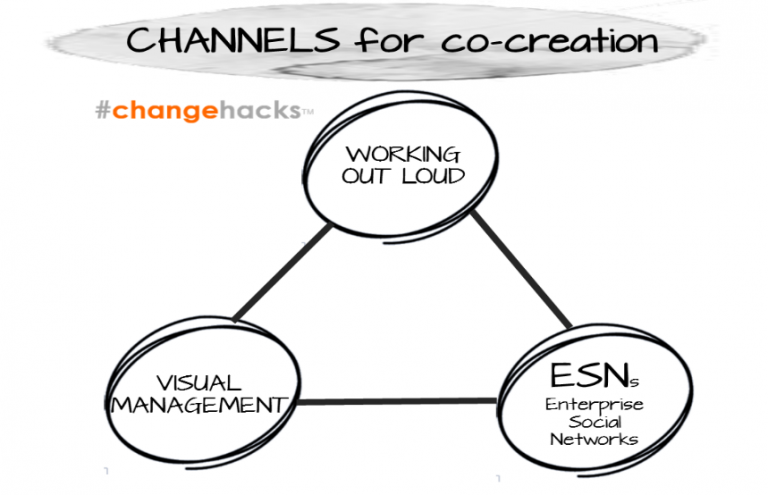
Let’s take a closer look at each one:
- Working out loud. Working out loud (often represented in text as WOL) is a practice that is growing in popularity due to its simplicity and effectiveness in promoting engagement and co-creation. It’s the practice of doing our work in a way that is visible to our colleagues. By working openly, you have the opportunity to gather additional information and possibly avoid duplication of effort. How many times have you started research or prepared documentation only to find out later that someone has completed something similar? Something that could have saved you hours of duplicated work? Then you can already see the benefits in working out loud!
- Enterprise social networking. An enterprise social network (ESN) is a platform used in organisations to facilitate online communication and collaboration. A leading ESN used in the workplace is Yammer. If you’re not already familiar with ESNs, think of it like a Facebook for the workplace. It’s the informality of ESNs that make them effective and a must-have in your toolkit. Convince your change leaders and sponsors to get on board to deliver authentic messages that invite comment and feedback. I’ve previously written about how Yammer is changing the way we work and about how we move up the social media adoption curve.
- Visual management. In John Medina’s book, Brain Rules, he explores 12 rules for optimising our performance at school, work and home. Among a swag of fantastic tips and information in his work, rule number 10 is ‘vision trumps all other senses’. A study by Kissmetrics Analytics reveals that visual content resonates at a deeper psychological level.
For too long, we’ve been inundated (and inflicted the same on others) by text-based pages of PowerPoint slides. As attention spans become shorter, and we are overwhelmed with mountains of information from various sources, we need to be clever about how we communicate and capture information.
Visual management boards, openly displayed in the workplace, communicate status and progress of work, along with dashboard style representations of business measures and targets achieved. In their visibility, these boards open conversation in an informal manner, in both scheduled meetings and through ad hoc, unscheduled chats.
For a real WOW factor, consider designing your key messages with infographics. There are some great infographic packages online where you can experiment with a limited range of templates for free. Look for Canva and Piktochart to get started.
There’s a great deal of information and blogs on these three channels for you to explore. Co-creation can mean a shift in mindset as it demands a willingness and courage for transparency, along with confidence with social media – all capabilities we can build through practice and experience. These channels can take a slightly disruptive, rapid and sometimes cheeky angle to get the message through, but overall they carry the honourable intent of engagement and involvement.
You can watch my lightning talk (yes a very short clip at under five minutes) on this topic above (or here)!
If there are ways to improve collaboration and co-creation in your work workplace, what’s stopping you? For additional information please see my website.
Next edition: Change hack 6: Why it’s time to reframe our mindset about resistance.
Article source: Change hack 5: Three channels for co-creation you need to know.


